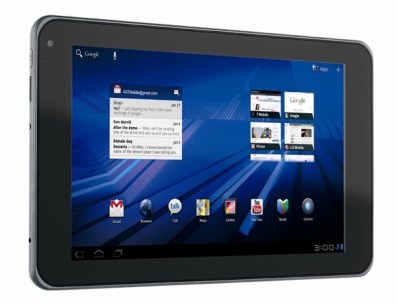
While still a rumor, a Nexus tablet would make sense for Google. Both Nexus phones served to dictate features that Google wanted other Android manufacturers to follow, and they also offered “pure Google experiences” — meaning they didn’t have any third-party software that would distract from the Android user experience, which made them compelling to developers.
[aditude-amp id="flyingcarpet" targeting='{"env":"staging","page_type":"article","post_id":251233,"post_type":"story","post_chan":"none","tags":null,"ai":false,"category":"none","all_categories":"business,mobile,","session":"B"}']Just like it did with HTC (for the Nexus One) and Samsung (for the Nexus S), Google would likely work closely with LG to develop the Nexus tablet. It would most likely be optimized for Android 3.0 “Honeycomb,” and would be free of the software issues that have been plaguing Motorola’s Xoom, the first Honeycomb tablet on the market.
At first glance, LG seems like an odd choice for Google to rely on for a flagship tablet. The company’s inexpensive Optimus One Android phones have been a hit with price-conscious consumers, and it’s also bringing the 3D-capable G-Slate tablet to T-Mobile (pictured above), but LG has yet to prove that it can deliver a flagship mobile device.
AI Weekly
The must-read newsletter for AI and Big Data industry written by Khari Johnson, Kyle Wiggers, and Seth Colaner.
Included with VentureBeat Insider and VentureBeat VIP memberships.
Then again, by taking LG under its wing, Google could also be helping the company to deliver better Android products in the future. That’s likely why Google has been jumping between manufacturers for its Nexus phones — by not playing favorites, Google is also helping budding manufacturers catch up to more established Android competitors.
VentureBeat's mission is to be a digital town square for technical decision-makers to gain knowledge about transformative enterprise technology and transact. Learn More
